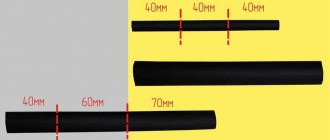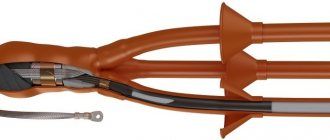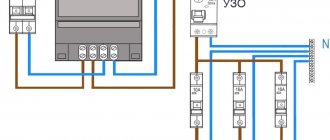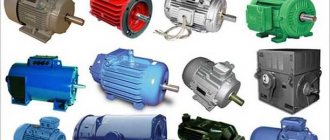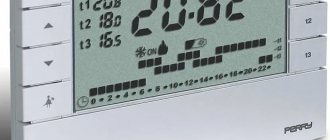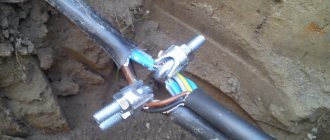In the process of creating various power networks, it often becomes necessary to splice several parts of the cable and connect them to electrical appliances and devices. Such work is carried out using cable fasteners, which is a set of materials and parts necessary for reliable sealing of junctions or branches of electrical conductors. The completeness of the kit varies and depends on the parameters of the electric current, insulating coating and cable design.
Purpose of the cable connector
To connect individual sections of the power cable, cable joints are used. The design and materials used ensure reliability and durability of the connection. Depending on the purpose they can be:
- repair;
- transitional;
- branch.
The cable coupling is the most popular, as it is most often used when installing electrical lines. The main requirement for fasteners of this type is the creation of a reliable and tight connection. Due to the fact that the cable sleeve is operated in unfavorable conditions, the manufacturing material must meet increased requirements for resistance to environmental influences. Depending on the operating conditions, cable couplings are produced in one piece or in dismountable form.
Couplings are used to splice electrical lines of different voltage classes. They provide a reliable connection, seal and protect the junction of single- and multi-core power cables from damage. When installing power lines on vertical and inclined routes, stop and stop-transition cable fasteners are used. It serves not only to connect conductors, but also prevents the oil impregnating composition from draining.
Knowing what a cable coupling is, it will not be difficult to select the necessary model for laying a line in the air or in the ground. The majority of products are made using cold shrink technology.
Cold shrink insulated couplings
These connections use the latest elastomer technology, which is based on applying a layer of dielectric material, which is essentially a special rubber based silicone material, on top of the power line that needs to be insulated.
This process must be carried out in a standard temperature environment and without heating using the method of tension and cold shrinkage.
With this method, fittings for power lines with elastomer are located inside a spiral-shaped cord and mounted in a specific location. After this, the element is distributed over the entire commutation surface of the parts and stretched over the insulation area of the connected components on both sides.
After that, the spiral cord is pulled out using counterclockwise rotational movements and removed from the connection. The insulating material then automatically covers the required area. This method makes it possible to install the part in structures where there is open fire and increased ignition hazards.
Cold shrink coupling
Return to content
Types of connecting cable sleeves
Cable fittings used for the construction of power lines are determined by the following characteristics:
- connection type;
- material of manufacture;
- parameters of transmitted electricity;
- installation location;
- overall dimensions;
- number of cores and shape.
In addition, depending on the material used, the following types of cable joints are distinguished:
- epoxy;
- lead;
- heat shrink;
- cast iron;
- brass;
- rubber.
Epoxy fasteners are designed for connecting cables laid in mines, tunnels and trenches. The product has an outer metal or asbestos casing. After connecting the cores, it is filled with epoxy.
Lead cable fittings are used for joining cables with metal or aluminum braiding. Available in 2 sizes: normal and small. It is made of lead pipes with a diameter of 60-110 mm, a length of 450-650 mm and depends on the cross-section of the cable. Such fittings have a large mass. Lead and epoxy couplings are practically not susceptible to external influences and can be used when laying underground.
The most common and simplest method of installing cable fittings is heat-shrink construction. After installing the coupling on the area to be connected, it is heated with a hair dryer or burner until the casing effect appears. The tube material is characterized by high insulating properties, and a wide shrinkage range of the material makes it possible to connect cables with different cross-sections of cores.
Common mistakes in installing end couplings
Failure to maintain the required distance
In these parts, which are installed on high-voltage lines, special attention should be paid to the distance between the phases and grounding. Otherwise, a breakdown of the insulating layer may occur right inside the electrical panel. In some cases, the dimensions of the shield do not allow this condition to be met, in which case it is necessary to purchase adapters.
Cross phase orientation
Under no circumstances should different wires be allowed to come into contact in the coupling. If this happens, field strength may subsequently arise. In order to be able to freely lay wires on top of one another, it is necessary to use a tube that equalizes the tension.
Tips with window for checking connection status
Outside the premises, it is prohibited to use tips that are made with a hole to inspect the condition of the core. There is a high probability that moisture will get into this hole, which can subsequently disrupt the switching, and also start the process of oxidation of metal elements, which will significantly reduce the quality of power transmission.
End couplings for external work
Installation of protective elements on the cores of outdoor couplings
The end product can be mounted in a vertical plane in a variety of ways, but its protective element must always prevent water from penetrating into the connection, and not vice versa. It is also very important to prevent the protective elements from coming into contact.
Air masses in the housing
The presence of air in the coupling triggers the formation of ions in a gaseous environment, which will ultimately lead to significant damage to the coupling. This is why it is necessary to use a sealant.
Return to content
Design of the locking device
The stopper is a cone-shaped conductive rod coated with a bakelite layer.
Appearance of a locking device used in cable sleeves
The figure shows the designs:
a) single stopper;
b) devices for a three-core cable, consisting of: 1 – rod; 2 – several layers of baked paper; 3 – bimetallic frame; 4 – textolite partition.
The paper is bakelised by applying layers of bakelite varnish to it. Each layer is baked in a thermostatic oven. This procedure is repeated several times.
Stoppers are stored and transported in sealed closed containers filled with oil-rosin mass.
Security measures
- Installation and maintenance of cable joints must be carried out by specialists with the necessary training and qualification group in electrical safety. Requirements for personnel, as well as conditions for carrying out repair work, are given in the “Installation Manual” in the “Safety Requirements” section.
- Before work, check that the cable matches the type of coupling stated on the kit label.
- Be sure to read the manufacturer's installation instructions. Often, experienced cable workers do not even look into it and, changing the manufacturer of couplings, violate the specified sequence, leaving “extra” components in the end of the assembly. And even from the same manufacturer, components and installation steps can be improved. The “Installation Guide” is publicly available on the website iek.ru in the product card.
- Be careful when working: do not bend the wires, heat the heat-shrinkable products correctly, do not rush when shrinking the heat-shrinkable elements - this can lead to the formation of “bubbles” after shrinkage.
Overview of locking couplings, types, application features
The use of various electrical devices is determined by many factors, including:
- number of cable cores;
- voltage transmitted along the line;
- gasket tilt.
For convenience of familiarization with the operating conditions of locking couplings, the installation data is summarized in the table:
| product name | Cable production | Voltage, kV | Conditions of use |
| St-6 | Normally impregnated armored cables | 6 | For vertical installation or height difference of 15 m or more |
| St-10 | Paper impregnated insulation | 10 | Steeply inclined lines |
| MSTO-35 | OSB and AOSB cables with core cross-section 70-150 mm² | 35 | Level difference more than 5 m |
| STEO | Single core conductors | 20-35 | Level difference exceeds permissible |
A special feature of the STEO locking coupling is the presence of an additional component element - a barrier made of dried fiberglass tape. It is wound using an epoxy compound over the entire switching unit with an overlap onto the metal sheath of the cable.
We read the markings, focus on the cable and do not forget about safety measures
Not a single electrical network can operate without cable couplings. They are used to connect power cables, make branches from lines, as well as to seal and isolate the break point when eliminating accidents. A huge variety of nomenclature allows you to select the required type of coupling for each type of work, but can complicate the selection process. We’ll tell you what to look for when choosing these products in our article.
Recommendations for increasing work speed
IEK ® cable sleeves are distinguished by high quality components, in particular heat-shrinkable materials. They are manufactured in full compliance with standards: from safety requirements to component labeling. It is worth noting that IEK ® couplings have received many positive reviews from electrical installation and power supply companies. Today, IEK ® products can be purchased in any region of Russia, as well as in neighboring countries, the Baltic states, Romania and East Asian countries.
Purpose of stop cable fittings, scope of its application
The type of product under consideration is intended for use on cable and wire products with impregnated paper insulation and serves to prevent the impregnating mass from flowing down during vertical installation or when the difference in levels on inclined sections exceeds the permissible level.
Moving the impregnation can lead to the fact that on certain sections of the electrical line it becomes insufficient or completely absent. This will cause the loss of the insulating properties of the cable and its rapid failure. In addition, excessive accumulation of impregnation at the lowest point can lead to the creation of hydrostatic pressure. By keeping the oil rosin composition from flowing down, locking couplings preserve the functionality of the conductor and extend its service life. The main area of application of stop couplings is cable routes with sudden changes in laying levels due to the complexity of the terrain or urban structure, when the difference between the upper and lower points exceeds the permissible difference for these conductors.
The described devices are installed when the length of the laid line is 2 kilometers or more. To prevent the creation of impregnating mass pressure that could damage the cable sheath or the integrity of electrical devices, locking couplings are installed at regular intervals specified by the design regulatory documentation.
Schematic representation of the location of the locking coupling for steeply inclined route laying
Advantages of MKT
Installation of cable terminations in the form of ready-made factory-made kits has a number of undeniable advantages over older types of connectors.
This is explained by the emergence of new advanced synthetic materials over the past decades. Stripper for removing insulation from wires
The delivery package of finished products takes into account every step of the technological process for creating the cable end layout. The advantages of universal kits for terminating cable connections are as follows:
- absolute sealing of cores and joints is created;
- heating the heat-shrinkable material compresses the new sheath of the separated ends of the cable until a dense and durable insulating layer is obtained;
- the end coupling has high heat resistance and immunity to aggressive environments;
- ease of installation allows semi-skilled specialists to perform the work;
- couplings ensure environmental safety of the surrounding area;
- the use of accompanying cleaning materials in the installation of couplings allows workers to remain with clean hands;
- guarantees, the service life of MKT reaches 30 years.
Note! Heat-shrinkable end sleeves are quick and easy to install compared to pour-in devices and cold-shrinkable products. However, it is worth noting that MKTs are much more expensive than their analogues.
Possible errors during installation and operation of the locking coupling
Neglect of grounding arrangement
If the cable insulation is broken, in the absence of grounding, there is a danger of electric shock to operating personnel. Considering the qualifications of electricians allowed to install cable fittings, such an error is unlikely, but cannot be completely ruled out.
Lack of maintenance
Electrical stop devices must be located in closed wells and subject to periodic inspections. During the inspection, humidity, ventilation, cleanliness, grounding condition, and cable fastenings are monitored. Identified deficiencies must be corrected in a timely manner.
Violation of the technology of filling the coupling with cable mass
The process of filling the device with mastic is very important. Do not allow the heated mass to boil or ignite (it becomes unsuitable for use). It is forbidden to mix the composition with a wooden object - moisture can get into the mixture from it. For these purposes, only metal stirrers are used.
Incorrect cable termination
When preparing the cores for connection, you cannot cut them to the same length in advance and strip the insulation. First, the ends must be bent into the desired configuration, suitable for the locking device, and only after that the excess length must be shortened. Otherwise, difficulties may arise during the switching process.
- Repair of a light switch in an apartment, a refrigerator with a regulator
- How to install a distribution box for electrical wiring in a brick, concrete wall
Recommendations for selection
Choosing the right cable sleeves is extremely important. After all, during the connection all technical and mechanical characteristics must be maintained. It is also important that they meet all standards and last a long time. Therefore, we recommend watching this video, which explains in detail how to choose cable sleeves. We also recommend reading about how to make a wire branch correctly.
So we have discussed with you what types and types of cable couplings there are. This information will allow you to make the right choice and carry out high-quality installation work.
Installation procedure for locking coupling
Installation begins with cutting the cable cores. First the armor and basic insulation are removed. Then the soaked paper is unwound. The paper insulation is removed until the prepared end of the conductor is given a conical shape. The exposed section of the wire should have a length equal to half the connecting sleeve.
Further activities are carried out according to step-by-step instructions:
- The prepared cable cores are connected to the locking device through connecting sleeves. Additionally, soldering of joints is carried out
Practical recommendation: There is an arrow on the frame of the locking device. It indicates the direction of inclination of the electrical route. This pointer must be taken into account when installing the device .
General view of switching the locking device through connecting sleeves
1 – cable, 2 – connecting sleeves, 3 – stoppers
- The joints are carefully insulated. For this, a special winding made of paper rolls and rolls is used.
- The switching unit is closed with two coupling halves (left and right), after which it is filled with cable mass through the holes
- Filling holes are closed with plugs
- Grounding is equipped: the shells and armored tapes of both cables are grounded with stranded copper wire. It is attached to the coupling body using bolted fasteners.
To protect the coupling from damage due to external influences, protective covers are used. They can be made of cast iron, steel or fiberglass.
Installation of locking couplings is carried out by a team (at least 2 people) staffed by electricians with qualifications of at least 5-6 categories.
Connecting sleeves
This part is necessary to ensure the most reliable contact between current-carrying elements. In stop couplings, sleeves are installed to connect the conductors to the stop rod. There are two most commonly used models:
- crimp - mounted by crimping or soldering (sometimes combined);
- screw – provide bolted connection of elements.
An example of a screw connection sleeve used in cable joints.
Crimping products are made from non-ferrous metals that combine good electrical conductivity, softness and strength.
